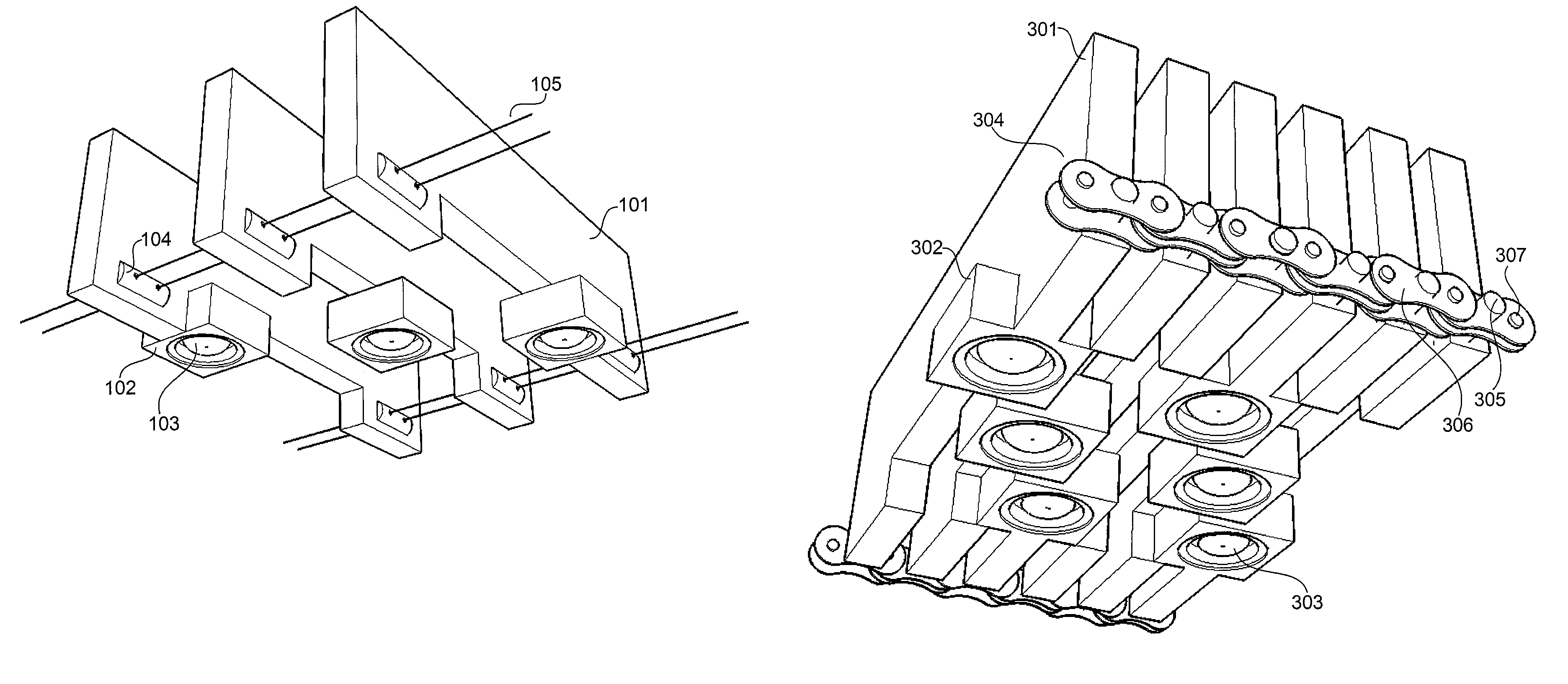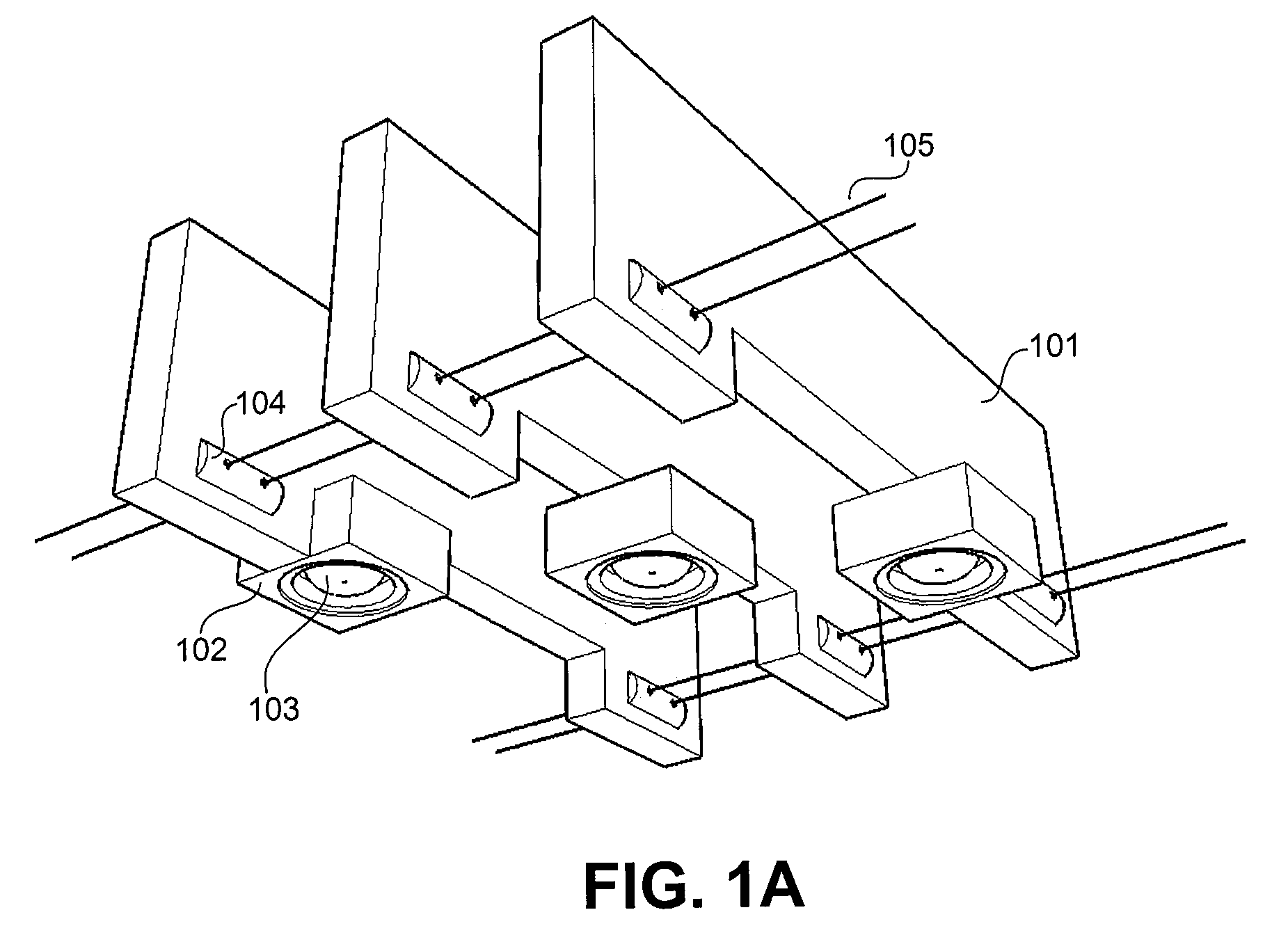Flexible array probe for the inspection of a contoured surface with varying cross-sectional geometry
a contoured surface and array probe technology, applied in the field of array probes, can solve the problems of eddy current sensor positioning above, difficult to inspect key aspects and difficult to achieve the effect of eddy current inspection
- Summary
- Abstract
- Description
- Claims
- Application Information
AI Technical Summary
Benefits of technology
Problems solved by technology
Method used
Image
Examples
Embodiment Construction
[0030]The present disclosure describes a flexible eddy current array probe comprising a plurality of thin array element mounting fins (referred to herein as “probe fins”) coupled together with sets of pivot mechanisms thereby allowing probe elements fixed to the probe fins to rotate in exactly one dimension. In this way, a flexible array probe of any size and shape can be realized. The details of the different types of pivot mechanisms used and the construction of the flexible array probe are discussed in detail below.
[0031]Although the present disclosure speaks specifically to an eddy current array probe, it is not limited in this regard. Indeed, the devices and methods of the present disclosure are well suited to any surface coupling array probe, such as, but not limited to, eddy current sensors, piezoelectric sensor elements, and magnetic flux leakage sensors devices.
[0032]FIGS. 1A and 1B illustrate the assembly of the preferred embodiment of the present disclosure. Both figures ...
PUM
| Property | Measurement | Unit |
|---|---|---|
| flexible | aaaaa | aaaaa |
| tension | aaaaa | aaaaa |
| length | aaaaa | aaaaa |
Abstract
Description
Claims
Application Information
 Login to View More
Login to View More - R&D
- Intellectual Property
- Life Sciences
- Materials
- Tech Scout
- Unparalleled Data Quality
- Higher Quality Content
- 60% Fewer Hallucinations
Browse by: Latest US Patents, China's latest patents, Technical Efficacy Thesaurus, Application Domain, Technology Topic, Popular Technical Reports.
© 2025 PatSnap. All rights reserved.Legal|Privacy policy|Modern Slavery Act Transparency Statement|Sitemap|About US| Contact US: help@patsnap.com



